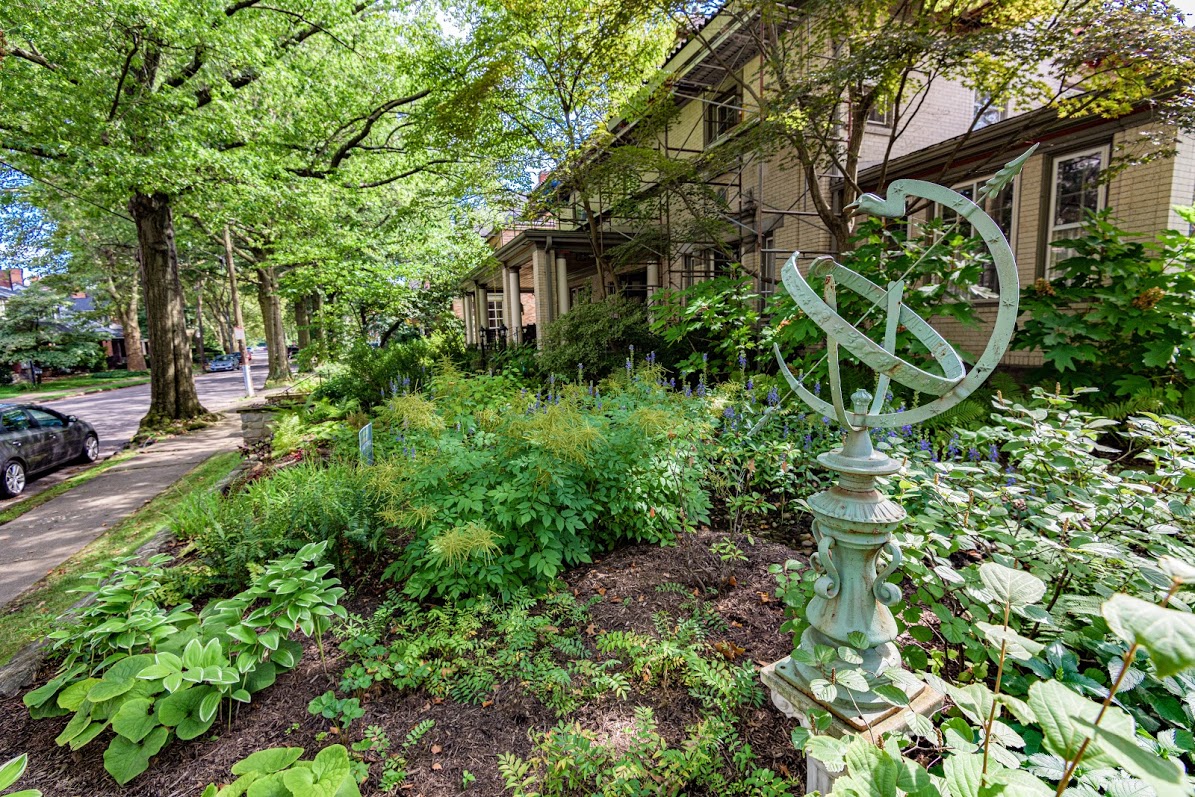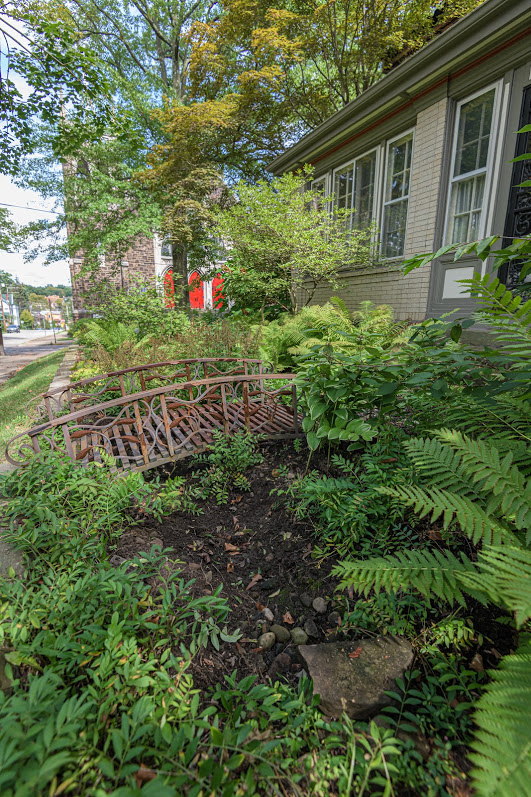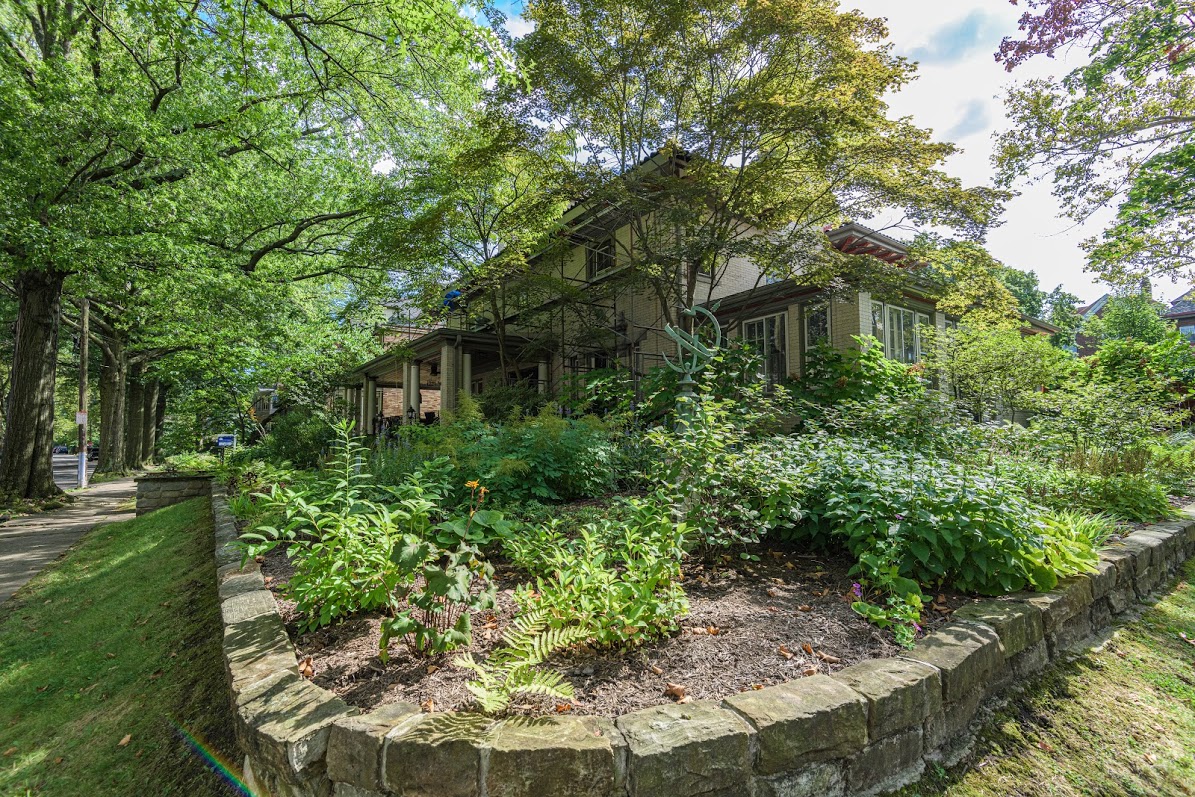Blog

Small Gardens, Big Impact: StormWorks Garden in Wilkinsburg, PA
Small Gardens, Big Impact is a new series of blog posts showcasing garden excellence at local homes. Published as part of our Greener Gardening series, each entry will pay a visit to one of our green-thumbed neighbors to discover how they made their own lawns and gardens beautiful and sustainable.
Our Small Garden, Big Impact series continues this month with a corner lot in Wilkinsburg. Brian Funk, the field crew leader for StormWorks and a Phipps Sustainable Landcare accredited professional, showed us around the garden on a warm, sunny evening.
The beautiful garden designed and maintained by StormWorks is a wonderful example of the adage “right plant, right place”. Shade-loving woodland plants make up the front of the garden. Witch hazel, ferns, wild ginger, geraniums, anemone, hellebore and meadow rue cover the garden nestled beneath towering oak trees.

Along with shade loving plants, the right corner of the front yard is home to a rain garden. This gorgeous rain garden mitigates most of the water coming from the roof down three different drain spouts connected to the garden through hidden pipes. In a severe storm, the garden will fill with water that slowly infiltrates into the ground and in two days the rain garden beds will be dry. A rain barrel and permeable pavement help manage the rest of the rainwater not directed to the downspouts.
StormWorks conducts extensive on-site observations, including percolation tests, to be sure that water will infiltrate the soil within two days so that mosquitoes do not breed in their rain gardens. Their careful observations also ensures that they select the best plants for the conditions of the site.
When we visited the garden great blue lobelia and toad lily flowers were in bloom and pink turtle head was just about ready to pop open! Along the side of the house in sunnier climes, joe-pye weed was blooming.

Brian explained that StormWorks gardens not only capture rainwater and slow its movement, they also create habitats. By creating communities of plants growing in harmony together the gardens welcome passing wildlife. While we visited, we watched as monarchs and yellow swallowtail butterflies enjoyed the blooms. To encourage beneficial insects, the StormWorks’ design features flowers in bloom from spring through fall, continually providing pollen and nectar food sources for visiting insects. We missed the colonies of dwarf iris, astilbe, baptesia and Jacob’s ladder that flowered in the spring.

Other features of the garden that make it special were the pathway that cuts through the front yard, allowing easy access to the garden, and the planted “hell strip”. This thin strip of ground running between two driveways (or sidewalk and street) are usually forgotten and left void of life. This was not so at the StormWorks garden. The area between the home’s permeable paved driveway and the neighbor’s driveway was booming with life. As mentioned above, the Joe-pye weed growing there welcomed butterflies while ferns, witch hazel, hellebore and other plants filled in the rest of the space. The diverse, dense planting brings beauty and function to an often forgotten area. The ecological benefits provided by this garden along with the beauty that it brings to the neighborhood make it a Small Garden with Big Impact.
Follow these links to learn more about StormWorks or Phipps Sustainable Landcare Accreditation training.

